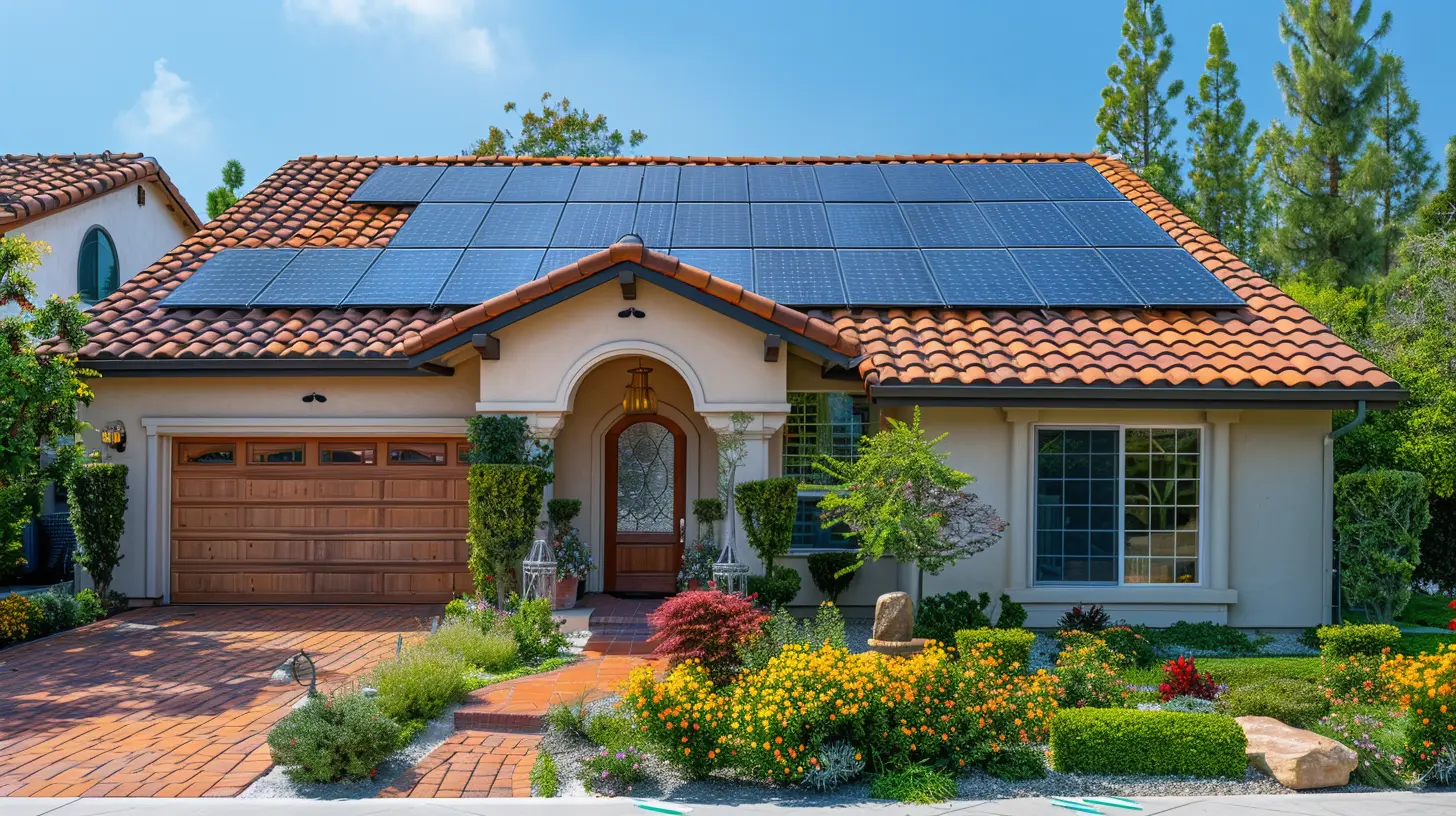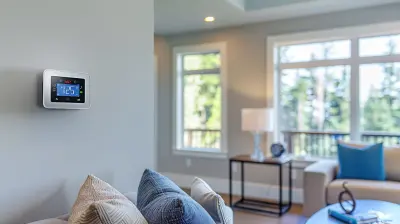Tax Credits for Energy-Efficient Real Estate Upgrades
13 November 2025
If you're a homeowner or real estate investor, you might be sitting on a goldmine of savings by making energy-efficient upgrades. Not only do these improvements lower utility bills, but they also come with some serious tax perks. And let's be honest—who doesn’t love paying less in taxes?
The government wants you to go green, and they’re willing to reward you for it. So, whether you're thinking about solar panels, better insulation, or switching to energy-efficient appliances, you're in the right place. Let’s break down how you can cash in on these tax credits while upgrading your property. 
Why Energy-Efficient Upgrades Matter
Imagine your home is like a leaky boat. The more energy it wastes, the more money you're throwing away. Energy-efficient upgrades act like a patch, stopping those financial leaks and boosting your home’s value.And here's the kicker—these upgrades don’t just help your wallet. They also make your home more comfortable, reduce carbon emissions, and attract eco-conscious buyers if you ever decide to sell.
Now, let’s dive into the tax benefits that can make this an even sweeter deal. 
What Are Tax Credits and How Do They Work?
Before we get into the good stuff, let’s clarify what a tax credit actually is. Unlike tax deductions (which reduce your taxable income), a tax credit directly lowers the amount of tax you owe. In other words, if you qualify for a $1,000 tax credit, that’s $1,000 off your tax bill—dollar for dollar!So, if you're installing energy-efficient features in your home, these credits can make a significant dent in your tax liability. 
Federal Energy-Efficient Tax Credits Available
The federal government has rolled out some generous incentives to encourage homeowners to go green. Here are some of the most valuable ones:1. Energy Efficient Home Improvement Credit
This credit covers upgrades like:- Energy-efficient doors and windows
- Insulation
- High-efficiency HVAC systems
- Heat pumps and water heaters
💰 Credit Amount: You can claim up to 30% of the costs for these upgrades, but there are annual limits based on the type of improvement.
2. Residential Clean Energy Credit
Thinking about solar panels or wind turbines? This credit is for you! It helps homeowners offset the cost of installing renewable energy systems.🔥 Eligible Upgrades Include:
- Solar panels
- Solar water heaters
- Small wind energy systems
- Geothermal heat pumps
- Battery storage technology
💰 Credit Amount: You can claim 30% of the total cost of installation with no maximum limit. Best of all? This credit is available through 2032 before it starts phasing out. 
State and Local Energy-Efficiency Incentives
While federal tax credits are awesome, don’t overlook what your state and local governments have to offer. Many states have their own rebates, credits, or low-interest loan programs for energy-efficient upgrades.A great place to check is the Database of State Incentives for Renewables & Efficiency (DSIRE). Just type in your zip code, and it’ll show you all the available programs in your area.
How to Claim These Tax Credits
Claiming energy-efficient tax credits isn’t as complicated as it sounds. Here's what you need to do:1. Keep All Your Receipts and Documentation
The IRS loves paperwork, and they’ll want proof that you actually made the upgrades. Hold onto:- Manufacturer certifications
- Contractor invoices
- Proof of payment
2. Use IRS Form 5695
When tax season rolls around, this is the form you'll need to fill out. It helps you calculate your Residential Energy Credits and claim them on your annual tax return.3. File Your Tax Return on Time
Make sure you include all necessary forms when submitting your taxes. If you're unsure, a tax professional can help ensure you don’t miss anything.The Long-Term Benefits of Energy-Efficient Upgrades
Besides the sweet tax savings, there are long-term perks to making your home more energy-efficient:✅ Lower Utility Bills – Energy-efficient homes use less power, meaning lower electricity and heating bills.
✅ Increased Home Value – Buyers love homes with lower utility costs and modern energy-saving tech.
✅ Environmental Impact – You’ll reduce carbon emissions and help combat climate change.
Common Myths About Energy-Efficient Tax Credits
There's a lot of misinformation floating around about these tax credits, so let's clear the air:❌ Myth #1: "You need to upgrade your entire home to qualify."
✅ Nope! Even replacing a single window or adding insulation can qualify.
❌ Myth #2: "Only new homes qualify."
✅ Wrong again. Existing homes can also take advantage of these credits.
❌ Myth #3: "Tax credits are the same as deductions."
✅ Tax credits provide a direct dollar-for-dollar reduction on your tax bill, while deductions only reduce taxable income.
Final Thoughts
Upgrading your real estate with energy-efficient improvements isn’t just a smart move—it’s a financially rewarding one. Between lower utility bills, increased home value, and generous tax credits, making your home more efficient is a win-win.So, if you’ve been thinking about installing solar panels, upgrading insulation, or investing in energy-saving appliances, now is the perfect time. The government is practically handing out free money—you just have to claim it!
And remember, the sooner you make these upgrades, the sooner you start saving. So why wait?
all images in this post were generated using AI tools
Category:
Real Estate TaxesAuthor:

Melanie Kirkland

